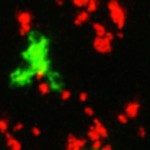Link to Pubmed [PMID] – 30982662
Dev. Cell 2019 04;49(2):171-188.e5
The migration of immune cells can be guided by physical cues imposed by the environment, such as geometry, rigidity, or hydraulic resistance (HR). Neutrophils preferentially follow paths of least HR in vitro, a phenomenon known as barotaxis. The mechanisms and physiological relevance of barotaxis remain unclear. We show that barotaxis results from the amplification of a small force imbalance by the actomyosin cytoskeleton, resulting in biased directional choices. In immature dendritic cells (DCs), actomyosin is recruited to the cell front to build macropinosomes. These cells are therefore insensitive to HR, as macropinocytosis allows fluid transport across these cells. This may enhance their space exploration capacity in vivo. Conversely, mature DCs down-regulate macropinocytosis and are thus barotactic. Modeling suggests that HR may help guide these cells to lymph nodes where they initiate immune responses. Hence, DCs can either overcome or capitalize on the physical obstacles they encounter, helping their immune-surveillance function.


